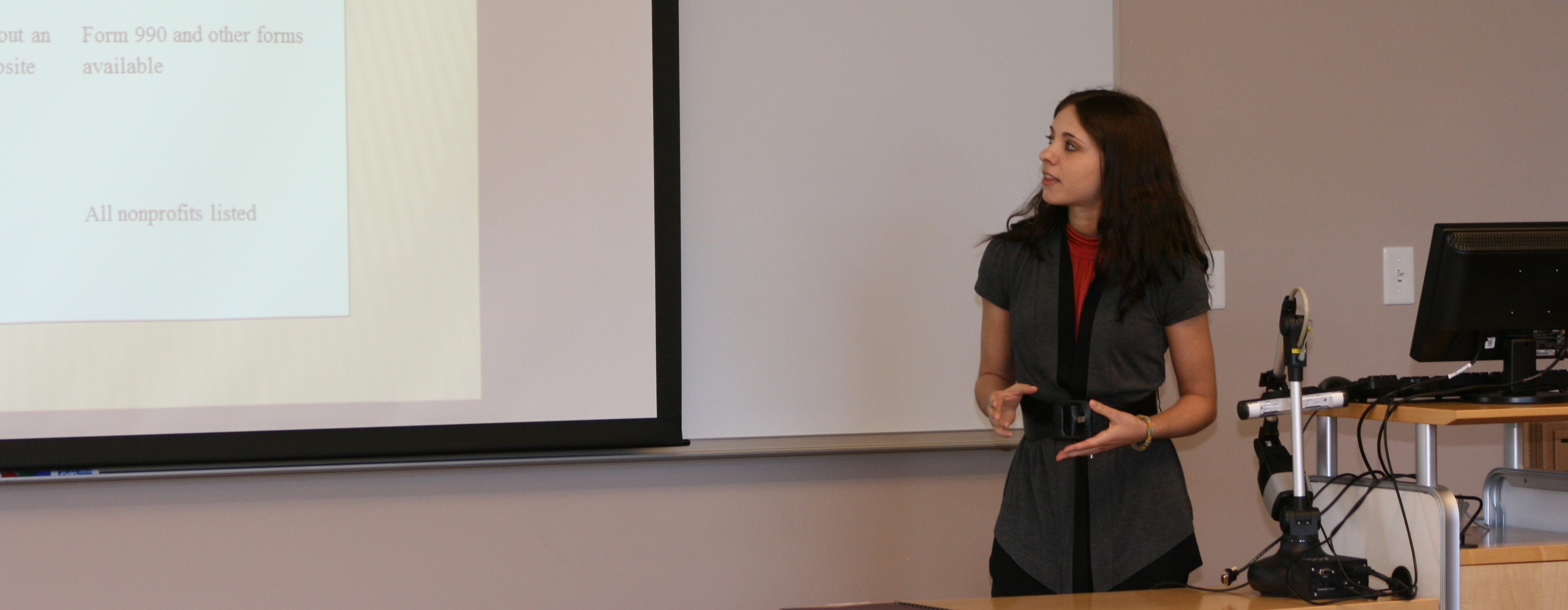On April 26, the Central College community celebrated the work of its best scholars as senior honors students presented their final theses in the Roe Center.
Seniors in the honors program culminate their academic careers by completing a senior honors thesis, the highest academic activity a Central student can undertake. The thesis is a yearlong, specialized, independent study course carried out within the student’s major discipline. The result is a bound senior thesis and a public presentation, as well as an honors designation on their final transcript.
Nick Vance
“External Heavy Atom Induced Phosphorescence and Molecular Properties of Harmala Alkaloids and Related Compounds: Investigations and Applications”
 Through his senior thesis research, biochemistry major Nick Vance strove to help his professor and advisor in her research.
Through his senior thesis research, biochemistry major Nick Vance strove to help his professor and advisor in her research.
Cathy Haustein, professor of chemistry, works with harmala alkaloids, which are found in a variety of plant species, are used in many medical treatments and have cardiovascular benefits. Vance’s experiments provided Haustein with another way of identifying the alkaloids.
“While doing research, it’s good to have multiple methods to back up your findings,” said Vance.
In his experiments, Vance dropped heavy atoms onto filter paper that contained harmala alkaloids. He hoped to figure out how each heavy atom affected the phosphorescent signal. This reaction occurs when large atoms are converted to an excited triplet state and emit light.
Vance said getting the experiment to work was frustrating because of the precision needed. He had to make many attempts. But once he got it to work, the results were worth it. Vance discovered the optimal number of heavy atoms to use when identifying harmala alkaloids in different substances. Haustein will be able to use Vance’s technique in her work next year.
Ivy Paul
“The Informed Donor: A Look into Child Sponsorship”
 Senior cultural anthropology major Ivy Paul used her senior thesis research to ask a question that gnaws at many donors: Are nonprofits using our money they way we hope they are?
Senior cultural anthropology major Ivy Paul used her senior thesis research to ask a question that gnaws at many donors: Are nonprofits using our money they way we hope they are?
Paul researched four child sponsorship programs: Save the Child, Child Fund International, World Vision and Compassion International. She found that these types of nonprofits often use the donor’s money for community development to address the root causes of poverty, rather than giving the funds directly to the child being sponsored. Although this work is likely just as beneficial, if not more so, than direct sponsorship, it does not attract donors the way photos of children do.
In her presentation, Paul recommended donors use three different websites to research the financial health and spending practices of their organizations: Charity Navigator, Better Business Bureau and GuideStar.
Paul’s goal for this project was to encourage positive philanthropy. “Responsible donors will encourage responsible organizations,” she said.
Eric Fjare
“Toward the Synthesis of a Novel OLED Material using Harmala Alkaloids”
 Scientific experiments don’t always turn out the way you’d like. But even failures have possibilities, something that senior chemistry major Eric Fjare learned during his work with organic light-emitting diodes (OLEDs).
Scientific experiments don’t always turn out the way you’d like. But even failures have possibilities, something that senior chemistry major Eric Fjare learned during his work with organic light-emitting diodes (OLEDs).
OLEDs are used in electronics such as cell phones, laptops and televisions. They are more efficient than their LED counterparts because they fluoresce, producing their own light. The diodes are also more durable and can be used in single layer and multilayer configurations.
When energy passes through the diodes, the electrons are excited to higher energy quantum states before dropping back to a resting state. That return produces a wavelength that determines the color of the fluorescence.
Fjare hoped to design and synthesize new chemicals that could be used blue OLEDs, which are the hardest to produce and die out sooner than other colors. Fjare chose to use harmine, a type of harmala alkaloid, in his experiments because it exhibits the color blue.
Unfortunately, none of Fjare’s four reactions showed the results he wanted. The harmine kept breaking apart during the experiments. It was disappointing at first, but he soon discovered that his control product resulted in a new compound which has the potential to be used as a blue OLED.
To his knowledge, yhe product Fjare produced had never been created before. It wasn’t listed on the popular research discovery tool SciFinder.
“The result, even though it wasn’t what we wanted, is really exciting,” said Fjare.
The following students also completed senior honors theses:
Andrew Hamer, biochemistry
“The Presence of Harmala Alkaloids in Local Plants with an Emphasis on the Mint Family (Lamiaceae)”
Adam Feenstra, chemistry
“Extraction and Analysis of Harmala Alkaloids in Several Types of Cucurbina Pepo
Nicole Ferguson, general studies
“Assays for Comparing Fungal Resistance to Candida albicans in Two Lines of Drosophila americana and the Use of Sequence Analysis to Identify a Highly Conserved Fungal Resistance Gene in Drosophila”


